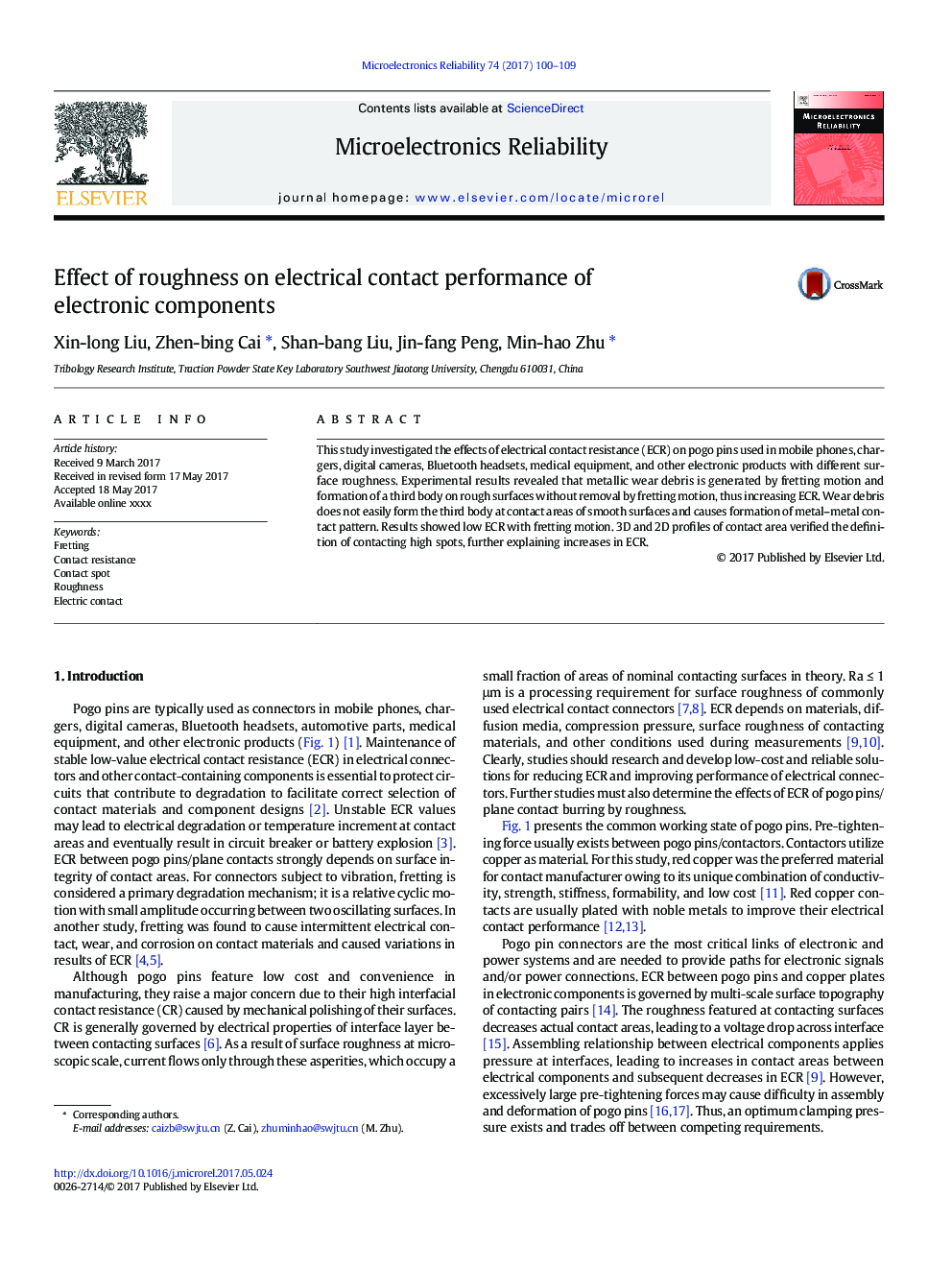| Article ID | Journal | Published Year | Pages | File Type |
|---|---|---|---|---|
| 4971558 | Microelectronics Reliability | 2017 | 10 Pages |
Abstract
This study investigated the effects of electrical contact resistance (ECR) on pogo pins used in mobile phones, chargers, digital cameras, Bluetooth headsets, medical equipment, and other electronic products with different surface roughness. Experimental results revealed that metallic wear debris is generated by fretting motion and formation of a third body on rough surfaces without removal by fretting motion, thus increasing ECR. Wear debris does not easily form the third body at contact areas of smooth surfaces and causes formation of metal-metal contact pattern. Results showed low ECR with fretting motion. 3D and 2D profiles of contact area verified the definition of contacting high spots, further explaining increases in ECR.
Related Topics
Physical Sciences and Engineering
Computer Science
Hardware and Architecture
Authors
Xin-long Liu, Zhen-bing Cai, Shan-bang Liu, Jin-fang Peng, Min-hao Zhu,
